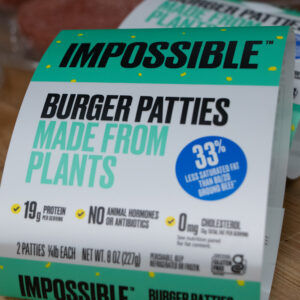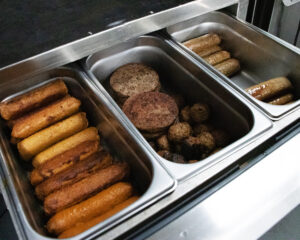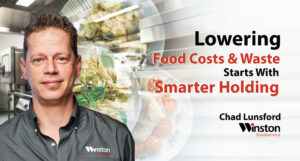Ah, prepping plant-based meats. Despite murmurs to the contrary, plant-based meats are expected to continue gaining popularity. Experts say that by 2027 the plant-based meat market is expected to reach 15.7 billion USD globally.
With a growing number of operations adding plant-based dishes to their menus, we wanted to test the best way to cook these no carne creations.
We tested two product brands:
- Beyond Meat – Italian sausages, brats, and meatballs
- Impossible – Burger patties, Italian sausages


We used an induction burner and a preheated non-stick skillet for the traditional prep.
Our CVap oven was an RTV7-05UV, preheated to Vapor 200°F / Air 350°F. We used parchment-lined sheet pans.
All product packaging included cooking directions, which were universally to cook in a skillet. We wanted to test and compare the recommended cooking method to cooking in a CVap® oven. Per the instructions, Beyond products were cooked to an internal temperature of 165°F. Impossible products were cooked to 160°F.
Prepping Plant-based Meat:Products
- Beyond Sausage – Hot Italian
Recommended Skillet Cook Time: 10 minutes, turning frequently
Actual Skillet Cook Time: 15-20 minutes
CVap Cook Time: 15-20 minutes - Beyond Sausage Brat Original
Recommended Skillet Cook Time: 6 minutes, turning halfway through
Actual Skillet Cook Time: 15-20 minutes
CVap Cook Time: 15-20 minutes - Beyond Meatballs Italian Style
Recommended Skillet Cook Time: 7-8 minutes, turning continuously
Actual Skillet Cook Time: 10-15 minutes
CVap Cook Time: 10-15 minutes
- Impossible Sausages – Italian
Recommended Skillet Cook Time: 10-12 minutes, turning every two minutes
Actual Skillet Cook Time: 15-20 minutes
CVap Cook Time: 15-20 minutes - Impossible Burger Patties
Recommended Skillet Cook Time: cook two minutes per side until the level of doneness reached
Actual Skillet Cook Time: 10-15 minutes
CVap Cook Time: 15-20 minutes



The Cooking Results
SKILLET COOKING
Pros
- Great seared aesthetic. The product appearance matched what consumers would expect from “real” meat.
Cons
- Skillet cooking took much longer to reach the internal temperature than indicated on the label.
- Searing created a bitter taste that was not expected.
- Mouthfeel was much drier compared to CVap-cooked products.
CVAP COOKING
Pros
- We were able to prepare everything in CVap within 30 minutes, from panning, to cooking, to holding.
- Actual cook time was comparable to skillet cooking in most cases.
- Product integrity held up through the cooking and holding processes.
- Each product retained more moisture compared to skillet-cooked products.
Con
- Lack of browning, compared to skillet-cooked products (but that may not be a “bad” thing).
Holding Plant-based Meats
- All products maintained integrity, regardless of cooking method.
- CVap-cooked products held their moisture much better than the skillet-cooked versions.
- Skillet-cooked products got increasingly bitter over time.
- It would be safe to assume that the CVap-cooked products could have held another hour without quality degradation.

If your operation offers plant-based products at any scale, the CVap-cooked method is the obvious way to go. Not only can you be prepping plant-based meats in much higher quantities, but it also brings out the product’s best qualities, juiciness, mouthfeel, and flavor. Most notably, CVap-cooked products didn’t develop the bitter taste that was so noticeable with the skillet-prepped products. Although CVap-cooked products didn’t brown like their skillet-prepped counterparts, this could be overcome with a quick finish on a grill (so long as it doesn’t linger long enough to turn bitter).
Regardless of the cooking method, product quality was solidly maintained in a CVap warming drawer. The same could be expected from a CVap holding cabinet.







